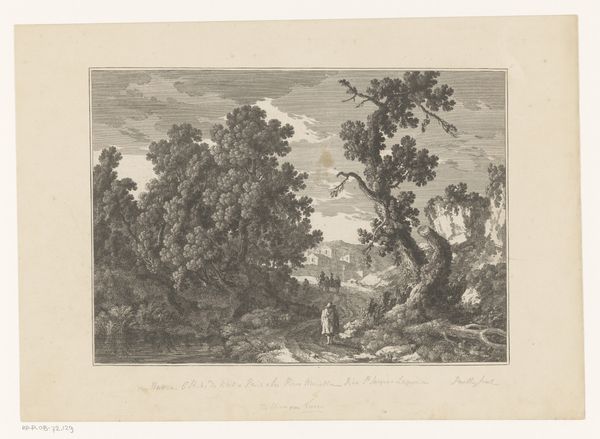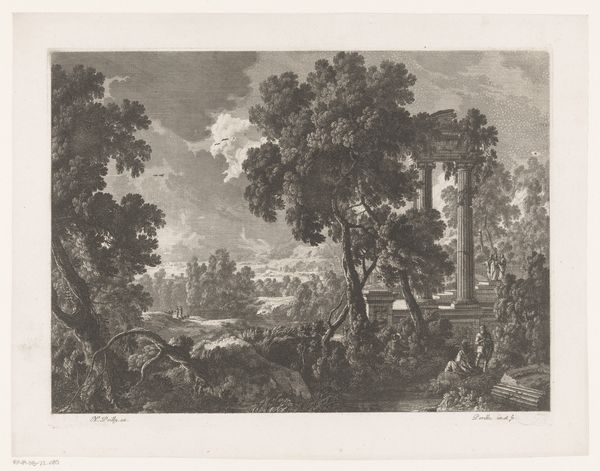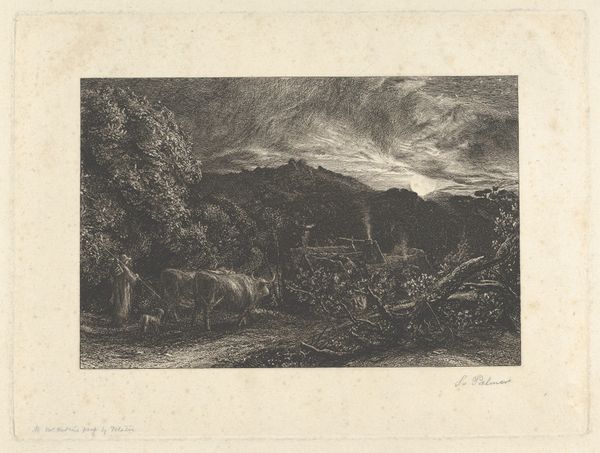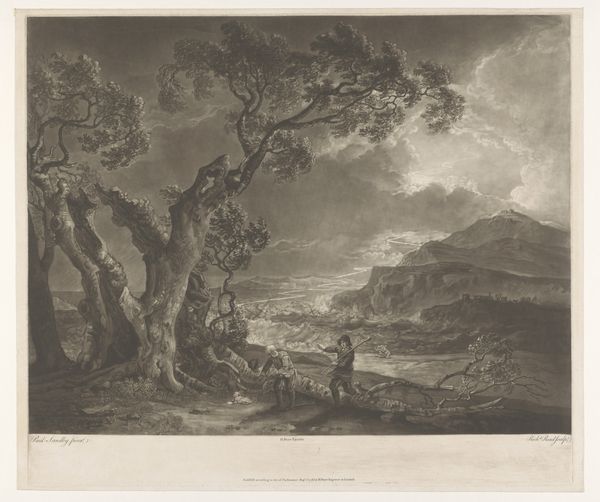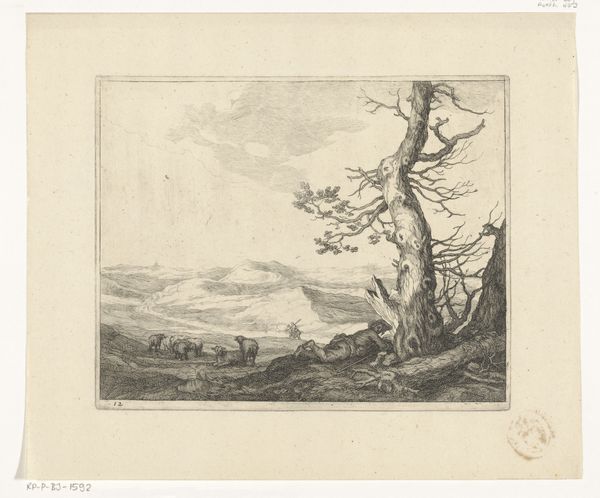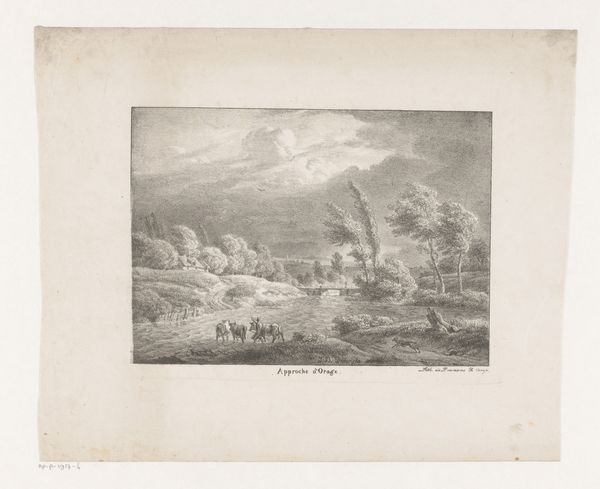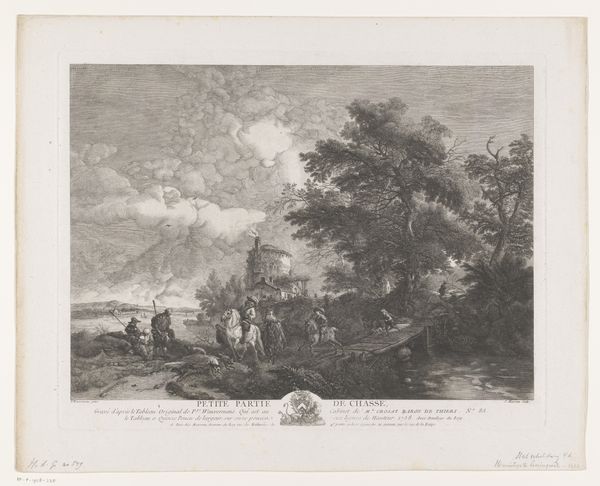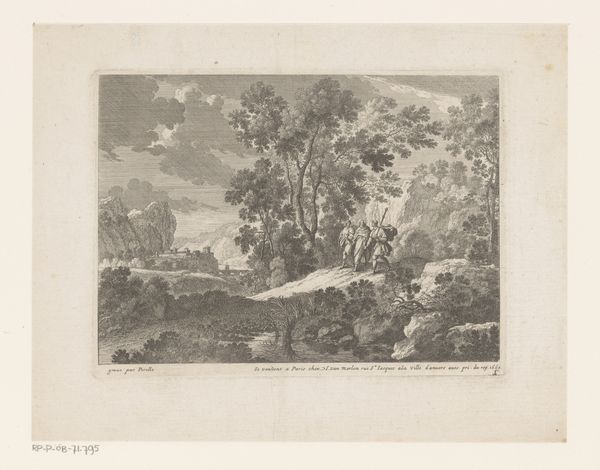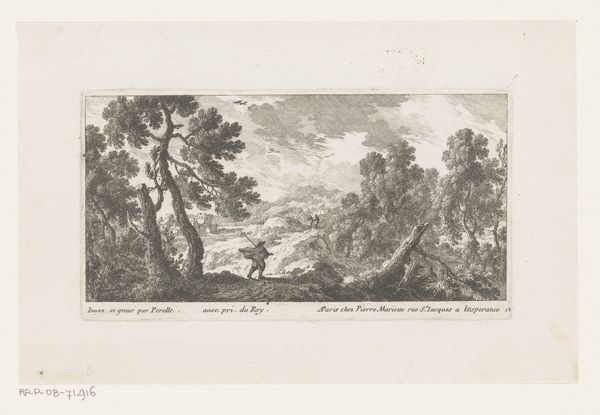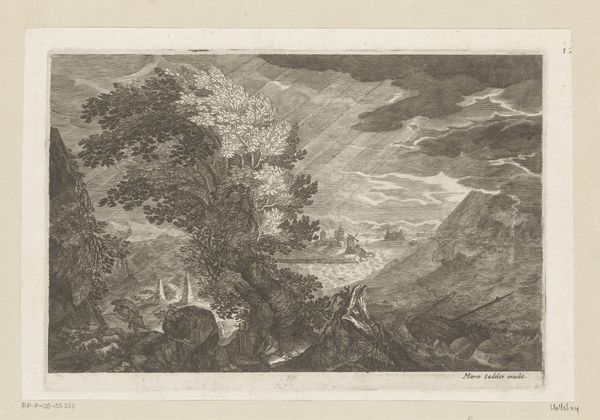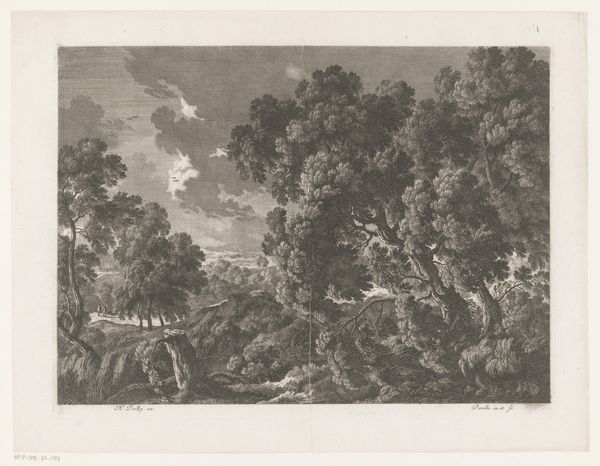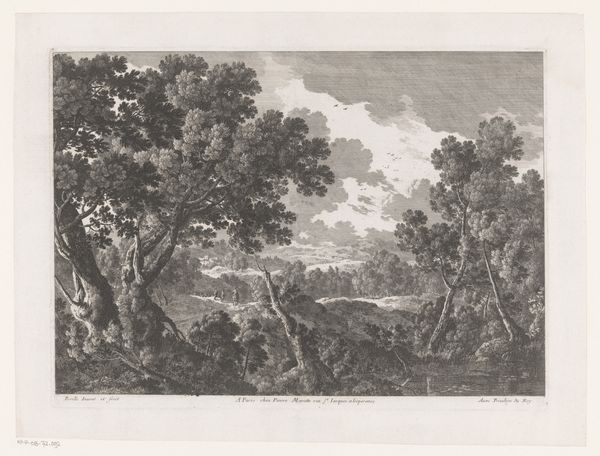
Dimensions: height 197 mm, width 245 mm
Copyright: Rijks Museum: Open Domain
Curator: Alexandre Calame created this graphite drawing entitled, "Mountain Landscape with Lake at Evening" between 1852 and 1855. It offers a rather brooding first impression. Editor: It's quite melancholic, isn't it? The heavy clouds and the muted tones certainly contribute. I'm drawn to the compositional tension between the detailed foreground and the soft, almost hazy background. It creates a sense of depth, but also one of unease. Curator: Unease is a great descriptor. It fits within the Romantic tradition, of course. Calame, along with other artists of this period, frequently used landscape to explore the sublime—that feeling of awe mixed with a bit of terror when confronted with nature's power. Do you notice how the gnarled tree in the foreground seems almost human in its struggle against the elements? Editor: Yes, I see that. It’s the dramatic lighting, certainly. It highlights the twisted branches, turning them into almost claw-like forms reaching towards the stormy sky. It speaks to me about resilience in the face of adversity—the ability of life to endure even under duress. There also appears to be small figures beneath the cliff – which gives scale, but also emphasizes the isolation and vulnerability of humanity in this vast landscape. Curator: The small figures certainly contribute to the feeling of being dwarfed by nature's spectacle. Evening is an especially potent symbol for Romanticism—it’s a time of transition, of reflection, and of heightened emotional sensitivity. Notice, the artist invites a reading from left to right where you travel over the top of that very cliff face – a classic romantic symbol for overcoming emotional challenges in life’s journey. The lake is especially crucial since, as the subconscious mind, water always shows the true emotion of the artwork. Editor: And it creates such a beautiful visual echo of the sky above. It emphasizes the pervasive darkness and imbues the scene with a deep sense of introspection. Thank you for guiding us in understanding these deeper ideas. Curator: Of course. Considering the artistic, psychological, and historical background is deeply interesting in light of visual elements. Editor: Absolutely. Thinking about art this way really amplifies the viewing experience, doesn't it?
Comments
No comments
Be the first to comment and join the conversation on the ultimate creative platform.
